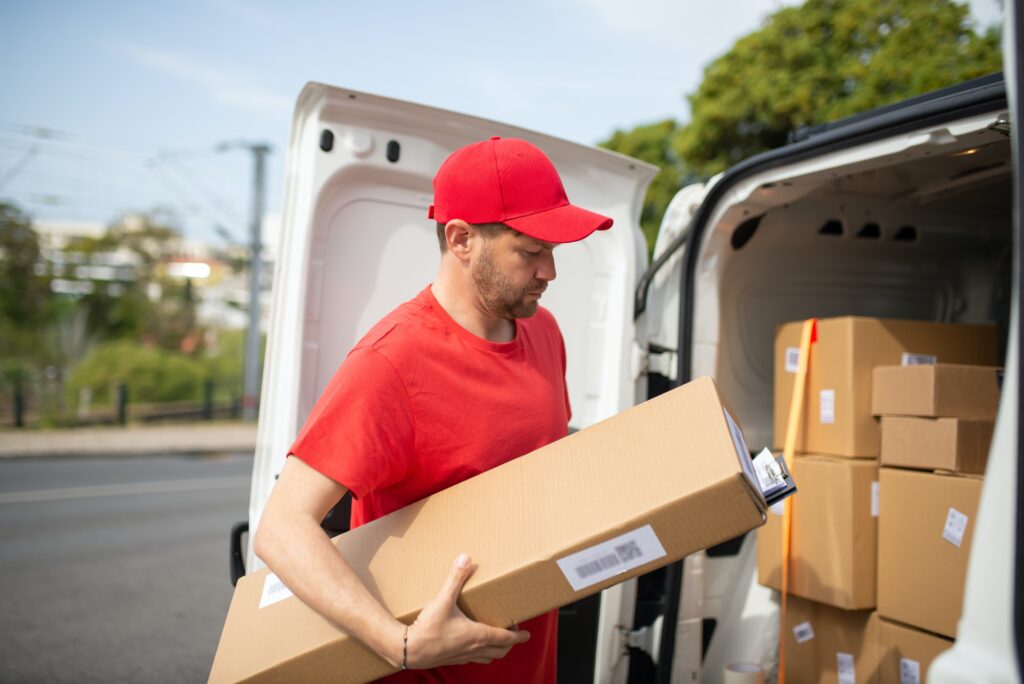
Courier and delivery services have long been a mainstay of the United Kingdom, developing from at least four different delivery systems operating in the Middle Ages to being dominated by the Royal Mail in the 20th Century, to the world of online shopping and same-day deliveries we have in 2024.
The general consensus is that the industry will only continue to grow with the rise of online shopping and deliveries.
But how big is the industry? How many parcels are delivered in the UK daily? How quickly does the modern-day consumer want something delivered? This useful article has rounded up data and statistics on the UK delivery and courier industry.
What Is The Scale Of The UK Delivery Industry?
The UK delivery industry has grown exponentially over the past decade. In 2013, approximately 1.7 billion parcels were processed annually. By 2021, this number had risen to 4.2 billion parcels. As of 2023, the industry processed around 5 billion parcels annually, reflecting continued growth due to the increasing popularity of e-commerce.
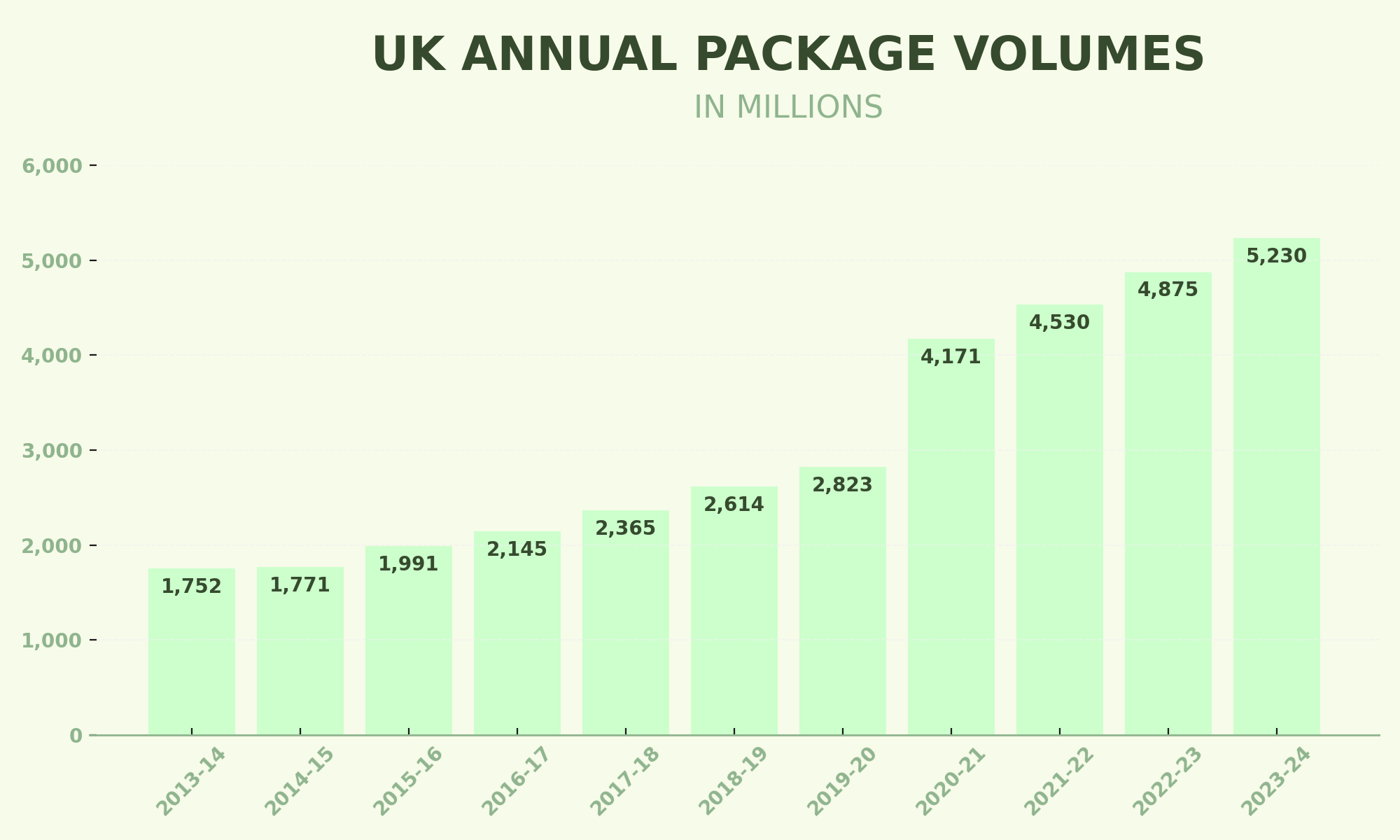
How much is the UK delivery and courier market worth?
The market size of the delivery and courier industry is estimated to be £16.4 billion as of 2023.
How many people work in the delivery industry?
Approximately 120,000 people are thought to be working in the delivery industry in the UK.
How many deliveries are made in the UK?
There were approximately 5,000,000,000 parcels delivered in the UK in 2023. Let’s break this number down further. This means that, per month, the UK has 416,000,000 parcels delivered. That’s 96,153,846 million per week, 13,698,630 per day, 570,776 per hour, 9,513 per minute, and 159 parcels per second!
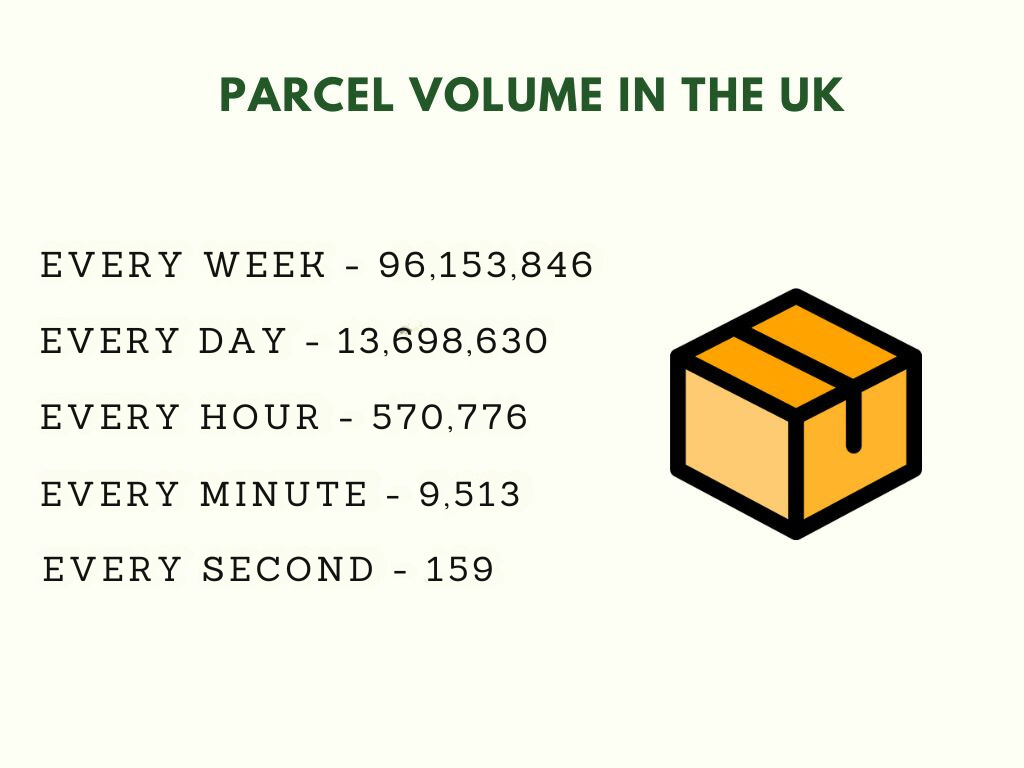
This also means that in 2023, approximately 80 parcels were received per person in the UK. It is safe to say we are a nation that loves getting a delivery!
Who Is Delivering These Parcels?
Whilst the parcel industry used to be almost entirely dominated by Royal Mail in the UK, in 2006 the market was opened up to full competition, leading to the situation we have today in which numerous companies compete to deliver your parcels, but who are they, and how many of them are there?
How Many Delivery Companies Are There In The UK?
There are 16,200 delivery and courier companies in the UK. That’s quite a lot, but there are some big players who are responsible for the vast majority of deliveries that go on, as you will see below.
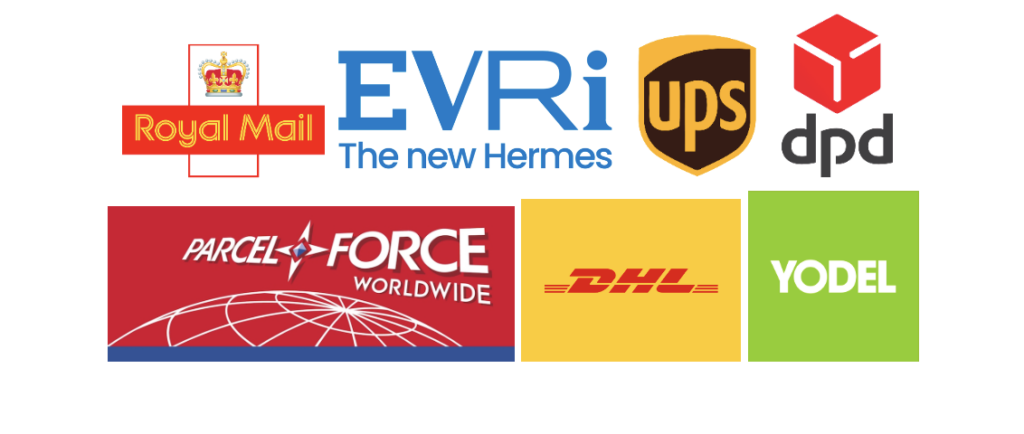
Who Is The Most Popular Delivery Service In The UK?
Royal Mail is the most popular delivery service in the UK, with 48% of Britons saying they prefer to use their services when sending items. Hermes (now rebranded to Evri) is the second most popular, with 18% of the vote, closely followed by DPDgroup with 15%. Parcelforce (6%), DHL (5%), Yodel (4%), UPS (3%), and others (2%) make up the rest of the list.
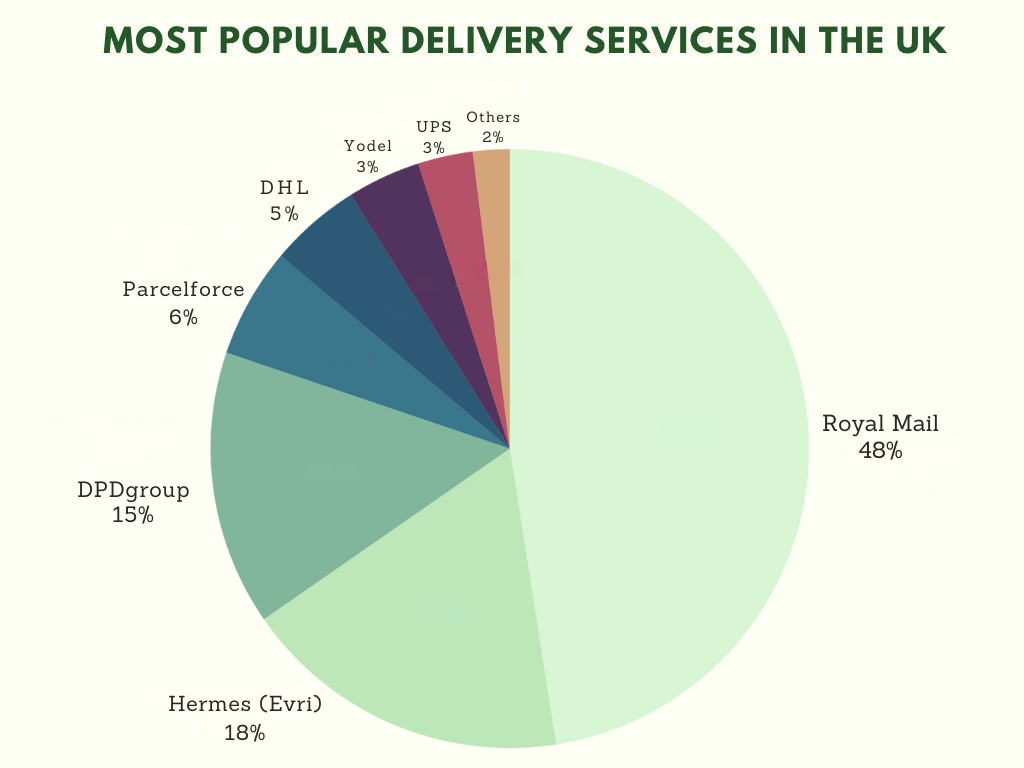
While DPDgroup is only the third most popular choice with customers, it boasts the highest customer satisfaction rate of all delivery companies, with 62% of consumers saying it was the best in the country. Royal Mail follows with 57% of the vote.
Who Is The Most Popular Online Delivery Service In The UK?
Hermes (Evri) is the number one choice for online retailers when choosing a delivery service, with 49 of the 100 largest online stores giving Hermes as an option. In contrast, just 37 out of 100 online retailers list Royal Mail as a delivery option, with DPDgroup making up the top 3, with 26 retailers choosing them.

Who Is Using Delivery Services?
So, we know how big the delivery industry is and who the main providers are, but who are the consumers using this service?
How Many Brits Use Delivery Services?
83% of Brits have used courier and/or delivery services in the last year, meaning that most of the population regularly engages with parcel services.
When breaking these numbers down by age, 56% of consumers aged 25-34 shopped online once a week in 2023.
Unsurprisingly, Gen-Z and Millennials are most likely to shop online, with 65% owning a delivery pass subscription, compared to just one-third (38%) of over-45s.
Interestingly, the COVID-19 pandemic dramatically sped up the use of these services by consumers aged 65 and over, as just 16% were using them once a week before the pandemic, compared to 43% after the lockdown.
Which City Uses Delivery Services The Most?
London has the largest market share of couriers/delivery services, with a 20% share (3,240). Manchester is second, with 6% (972), and Cheshire is third, with 4% (648).

In a nutshell, people are using these delivery services more because they are shopping online more. In fact, online sales saw over a 50% increase in their share of the total retail market, going from 19% in February 2020 to 30% in January 2024.
According to studies, the number one reason consumers are ordering online is cost (53%), followed by the ease of finding products online (51%) and greater variety (39%). 8% of consumers order online as they already have a delivery subscription.
What Do People Expect From Delivery Services?
81% of online orders were delivered by a delivery service in 2023, but what do consumers expect from these services, and what is most important to them when choosing a delivery option?
How Quickly Do People Want Their Orders Delivered?
56% of consumers in 2023 strongly believed that same-day deliveries are important, rising from 33% in 2020. 64% of consumers said they would pay more for same-day delivery services.
62% of those interviewed said they expect next-day delivery when ordering online (up from 44% in 2020).
Interestingly, 55% of consumers want two-hour time slots for their deliveries (up from 44% in 2020), which shows that online delivery’s convenience is highly valued.
How Important Are Eco-Friendly Delivery Considerations For Consumers?
61% of consumers are willing to wait slightly longer for more eco-friendly deliveries (down from 74% in 2020). This shows that, despite the increasing awareness around global warming and climate change, consumers still see fast delivery as a big priority when ordering online.
How Important Are Returns For UK Consumers?
Whilst the cost of delivery is the most important factor when deciding on online delivery services (68%), a returns policy was second with 43%.
How Many Consumers Return Their Items?
37% of consumers who received a courier parcel also returned a delivered item within 6 months.

Interestingly, return rates are higher with younger consumers. 45% of 16-24-year-olds returned a product in the last 6 months, compared to just 27% of those over 55.
How Fast Is The Delivery Industry Growing?
Since 2013, deliveries in the UK have increased by 159% annually, rising from 1,752,000,000 to 4,500,000,000 in 2023.
How Much Will The Delivery Industry Grow In The Future?
Growth is predicted to continue in the delivery industry – the sector’s market value is forecast to increase by 92% between 2019 and 2024 to reach £21 billion.

Conclusion
So there you have it: an overview and insight into the UK’s delivery and courier industry, which, from the sounds of things, will only continue to grow.
We hope you found these statistics interesting. Remember to use Shiply when you need something delivered!
Sources: Byrd, Bold Data, WebArchive, Charged Retail, Mintel 1, Mintel 2, Pitney Bowes, Statista 1, Statista 2, Statista 3, Statista 4


 Mark Dean
Mark Dean
